spanish flu
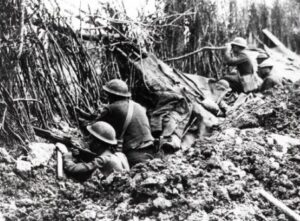
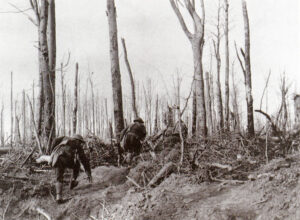 When I think of war and of the largest offensive in United States history, I don’t picture a battle in World War I. Nevertheless, I should. The Meuse–Argonne offensive, which was also called the Meuse River–Argonne Forest offensive, the Battles of the Meuse–Argonne, and the Meuse–Argonne campaign, depending on who you were, was a major part of the final Allied offensive of World War I that stretched along the entire Western Front. The offensive ran for a total of 47 days, from September 26, 1918, until the Armistice of November 11, 1918, and it was the largest in United States military history, past or present.
When I think of war and of the largest offensive in United States history, I don’t picture a battle in World War I. Nevertheless, I should. The Meuse–Argonne offensive, which was also called the Meuse River–Argonne Forest offensive, the Battles of the Meuse–Argonne, and the Meuse–Argonne campaign, depending on who you were, was a major part of the final Allied offensive of World War I that stretched along the entire Western Front. The offensive ran for a total of 47 days, from September 26, 1918, until the Armistice of November 11, 1918, and it was the largest in United States military history, past or present.
The offensive involved 1.2 million American soldiers, and as battles go, it is the second deadliest in American history. During the course of the battle, there were over 350,000 casualties including 28,000 German lives, 26,277 American lives, and an unknown number of French lives. The losses involving the United States were compounded by the inexperience of many of the troops, the tactics used during the early phases of the operation, and in no small way…the widespread onset of the global influenza outbreak called the “Spanish flu.” The 1918 Spanish Flu pandemic, also known as the Great Influenza epidemic, was an exceptionally deadly 
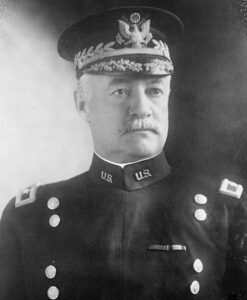 global influenza pandemic caused by the H1N1 influenza A virus. The pandemic affected an estimated 500 million people, or approximately a third of the global population. It is estimated that 17 to 50 million, and possibly as high as 100 million people lost their lives, which probably increased the deaths during the Meuse-Argonne offensive.
global influenza pandemic caused by the H1N1 influenza A virus. The pandemic affected an estimated 500 million people, or approximately a third of the global population. It is estimated that 17 to 50 million, and possibly as high as 100 million people lost their lives, which probably increased the deaths during the Meuse-Argonne offensive.
The Meuse–Argonne was the principal engagement of the American Expeditionary Force (AEF) during World War I, and it was what finally brought the war to an end. It was the largest and bloodiest operation of World War I for the AEF. Nevertheless, by October 31, the Americans had advanced 9.3 miles and had cleared the Argonne Forest. The French advanced 19 miles to the left of the Americans, reaching the Aisne River. The American forces split into two armies at this point. General Liggett led the First Army and advanced to the Carignan-Sedan-Mezieres Railroad. Lieutenant General Robert L Bullard led the Second Army and was directed to move eastward toward Metz. The two United States armies faced portions of 31 German divisions during this phase. The American troops captured German defenses at Buzancy, allowing French troops to cross the Aisne River. There, they rushed forward, capturing Le Chesne, also known as the Battle of Chesne (French: Bataille du Chesne).
In the final days, the French forces conquered the immediate objective, Sedan and its critical railroad hub in a 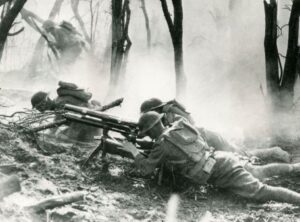
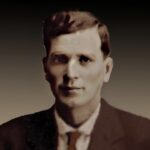
battle known as the Advance to the Meuse (French: Poussée vers la Meuse), and on November 6, American forces captured surrounding hills. On November 11, news of the German armistice put a sudden end to the fighting. That was fortunate for the armies, but for my 1st cousin twice removed, William Henry Davis, it was six days too late. He lost his life on November 5, 1918, on the west bank of the Meuse during these battles. He was just 30 years old at the time.

 Most of the time, Christmas is a time filled with tradition. Many families celebrate it in exactly the same way every year. Of course, the most important thing about Christmas is the celebration of the birth of Jesus. When I think of where this world would be if Jesus had never come down from Heaven to save us from our own sins, I feel such thankfulness. We needed Him, and He came. No one really knows what day Jesus was born, but in reality, that part doesn’t really matter, but rather the fact that he was born.
Most of the time, Christmas is a time filled with tradition. Many families celebrate it in exactly the same way every year. Of course, the most important thing about Christmas is the celebration of the birth of Jesus. When I think of where this world would be if Jesus had never come down from Heaven to save us from our own sins, I feel such thankfulness. We needed Him, and He came. No one really knows what day Jesus was born, but in reality, that part doesn’t really matter, but rather the fact that he was born.
This Christmas, for many people has been different than any other Christmas we have had before. Most us us weren’t alive in 1918 when the Spanish Flu Pandemic brought quarantine to many places in the world. I don’t know if things were as locked down as they are this year, but those who were ill, could not be with other people, and so their families were separated, as many are now. It makes for a Christmas that doesn’t feel like Christmas. Still, we have to remember the reason for the season, and not the things we have lost. John 3:16 says, “For God so loved the world, that he gave his only begotten Son, that whosoever believeth in him should not perish, but have everlasting life.” Without Jesus, we were doomed. With Him we have victory and everlasting life. What a wonderful reason to celebrate His birthday. He is the Savior of the World, and His way is so easy for us to follow.
Like it or not, this Christmas brings us to the beginning of the last week of a horrible year, and one the likes of which many of us hope never to go through again. January of 2020 found us facing the beginning of the pandemic, and by March we were in quarantine, and the economy was shut down. The year got steadily worse until many of us found ourselves 
 weary, and ready to start a new year. For my family, that has not changed. We are really ready for 2021. Even today was a sad day, but I will tell of that story tomorrow. I believe the new year will be much better, and as bad as 2020 has been, I am very optimistic for the new year, not for any political or human reason, but because I believe that God is good to us and because he sent His son to die for us, He will not leave us without hope. Therefore I will have hope for 2021. Merry Christmas to all!!
weary, and ready to start a new year. For my family, that has not changed. We are really ready for 2021. Even today was a sad day, but I will tell of that story tomorrow. I believe the new year will be much better, and as bad as 2020 has been, I am very optimistic for the new year, not for any political or human reason, but because I believe that God is good to us and because he sent His son to die for us, He will not leave us without hope. Therefore I will have hope for 2021. Merry Christmas to all!!
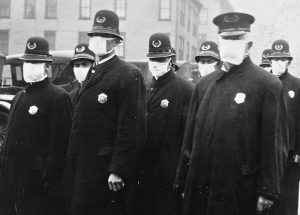 As the Covid-19 Pandemic has spread across our nation, so has the battle for or against the wearing of face masks. Part of the problem has been the conflicting analysis as to the value of the masks between one doctor and another, one politician and another, or even the same doctor at different times during the crisis. Many states, cities, and even establishments have rules about wearing a mask, with varied levels of enforcement. Of course, we were told to “shelter in place” and close any “non-essential” businesses, a catastrophic event for the economy. Everything from schools to bars, and theaters to salons was closed. Cities became virtual ghost towns, and things like Facebook and Twitter, Zoom and Google Classroom, texting and phone calls became vital. People’s sanity began to take a hit, and loneliness became the norm…especially for anyone who lived alone.
As the Covid-19 Pandemic has spread across our nation, so has the battle for or against the wearing of face masks. Part of the problem has been the conflicting analysis as to the value of the masks between one doctor and another, one politician and another, or even the same doctor at different times during the crisis. Many states, cities, and even establishments have rules about wearing a mask, with varied levels of enforcement. Of course, we were told to “shelter in place” and close any “non-essential” businesses, a catastrophic event for the economy. Everything from schools to bars, and theaters to salons was closed. Cities became virtual ghost towns, and things like Facebook and Twitter, Zoom and Google Classroom, texting and phone calls became vital. People’s sanity began to take a hit, and loneliness became the norm…especially for anyone who lived alone.
It’s been a grim time, but it isn’t the first time. During the 1918 Spanish Flu Pandemic, mask wearing started with the first masks being made out of gauze, which was quite porous. Still, in an effort to stop the spread, or as we would say these days, flatten the curve, all the people were now asked to wear masks. In fact, in the Fall of 1918, it became mandatory. With the second surge in December 1918, new restrictions went into place. The January 1919 ordinance had a much larger impact in creating resistance to wearing a mask in public by American citizens. However, it too was short lived, and on February 1, 1919 the city ordinance requiring every citizen of San Francisco going out in public to wear masks was voted down. The mandatory mask laws for COVID-19 are not new. This has already happened twice in American history and if you do feel strongly about not wearing one, it has been protested successfully before in a pandemic caused by a much deadlier virus.
I don’t believe the resistance, with was called the Anti-Mask League of San Francisco fell along party lines, like 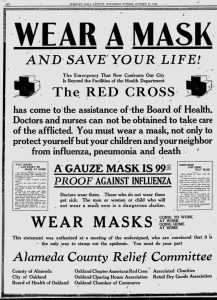 much of today’s resistance seems to be, but were rather a diverse bunch of individuals with varying professional backgrounds. Its members included physicians, libertarians, and many others. Many of the same arguments we have today, were in place then, and it is debatable as to whether or not the masks of today are any better than the ones back then…with the possible exception of the medical grad hazard wear, the N-95 mask, and the Head gear. Pretty much everything we’ve tried with Covic-19 was also used in 1918 to try to prevent the spread of the flu…close schools, wear masks, don’t cough or sneeze in someone’s face, avoid large events and hold them outside when possible, and of course, no spitting. There were many ways to get the word out, like in Philadelphia, where streetcar signs warned “Spit Spreads Death.” In New York City, officials enforced no-spitting ordinances and encouraged residents to cough or sneeze into handkerchiefs (a practice that caught on after the pandemic). The city’s health department even advised people not to kiss “except through a handkerchief,” and wire reports spread the message around the country. I don’t know…does any of this sound familiar to you, because it sure does to me. I guess there really is nothing new under the sun. In western states, some cities even called mask ordinances a patriotic duty. In October 1918, the San Francisco Chronicle ran a public service announcement telling readers that “The man or woman or child who will not wear a mask now is a dangerous slacker.” This was in reference to the type of World War I “slacker” who didn’t help the war effort. One sign in California threatened, “Wear a Mask or Go to Jail.” The PSA in the Chronicle appeared on October 22, just over a week before San Francisco had scheduled its mask ordinance to begin on November 1. It was signed by the mayor, the city’s board of health, the American Red Cross and several other departments and organizations, and it was very clear about its message: “Wear a Mask and Save Your Life!”
much of today’s resistance seems to be, but were rather a diverse bunch of individuals with varying professional backgrounds. Its members included physicians, libertarians, and many others. Many of the same arguments we have today, were in place then, and it is debatable as to whether or not the masks of today are any better than the ones back then…with the possible exception of the medical grad hazard wear, the N-95 mask, and the Head gear. Pretty much everything we’ve tried with Covic-19 was also used in 1918 to try to prevent the spread of the flu…close schools, wear masks, don’t cough or sneeze in someone’s face, avoid large events and hold them outside when possible, and of course, no spitting. There were many ways to get the word out, like in Philadelphia, where streetcar signs warned “Spit Spreads Death.” In New York City, officials enforced no-spitting ordinances and encouraged residents to cough or sneeze into handkerchiefs (a practice that caught on after the pandemic). The city’s health department even advised people not to kiss “except through a handkerchief,” and wire reports spread the message around the country. I don’t know…does any of this sound familiar to you, because it sure does to me. I guess there really is nothing new under the sun. In western states, some cities even called mask ordinances a patriotic duty. In October 1918, the San Francisco Chronicle ran a public service announcement telling readers that “The man or woman or child who will not wear a mask now is a dangerous slacker.” This was in reference to the type of World War I “slacker” who didn’t help the war effort. One sign in California threatened, “Wear a Mask or Go to Jail.” The PSA in the Chronicle appeared on October 22, just over a week before San Francisco had scheduled its mask ordinance to begin on November 1. It was signed by the mayor, the city’s board of health, the American Red Cross and several other departments and organizations, and it was very clear about its message: “Wear a Mask and Save Your Life!”
“Red Cross headquarters in San Francisco made 5,000 masks available to the public at 11:00am, October 22. By noon it had none,” wrote the late historian Alfred W Crosby in America’s Forgotten Pandemic: The Influenza of 1918. “By noon the next day Red Cross headquarters had dispensed 40,000 masks. By the twenty-sixth 100,000 had been distributed in the city… In addition, San Franciscans were making thousands for themselves.” Lasting from February 1918 to April 1920, the Spanish Flu Pandemic infected 500 million people…about a third 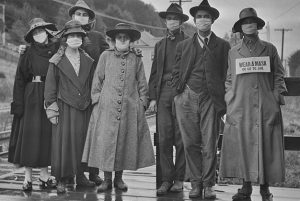 of the world’s population at the time, in four successive waves. The death toll is typically estimated to have been somewhere between 17 million and 50 million, and possibly as high as 100 million, making it one of the deadliest pandemics in human history. With all the safeguards, and the lack of success in “stopping the spread,” I guess it is up to each individual to decide on the effectiveness, or the lack thereof, concerning the safeguards that were put in place. To me, it seems that we have done pretty much the same things today as they did in 1918, so only time will tell us if they were successful, or a waste of time and money. Still, since the Spanish Flue had 4 waves, it doesn’t seem like we successfully stopped anything.
of the world’s population at the time, in four successive waves. The death toll is typically estimated to have been somewhere between 17 million and 50 million, and possibly as high as 100 million, making it one of the deadliest pandemics in human history. With all the safeguards, and the lack of success in “stopping the spread,” I guess it is up to each individual to decide on the effectiveness, or the lack thereof, concerning the safeguards that were put in place. To me, it seems that we have done pretty much the same things today as they did in 1918, so only time will tell us if they were successful, or a waste of time and money. Still, since the Spanish Flue had 4 waves, it doesn’t seem like we successfully stopped anything.
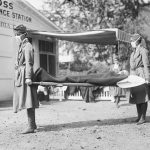
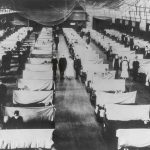 Not everyone agrees with getting the flu shot, and I get that. Still, even though there have been issues with the flu shot, it has also been something, along with medicines that has helped to prevent breakouts like the flu pandemic that hit Philadelphia on this day, September 28, 1918. It is believed that a Liberty Loan parade prompted the outbreak in Philadelphia, and before the outbreak was over, an estimated 30 million people worldwide were dead. As most of us know, influenza is a virus that attacks the respiratory system, is highly contagious, and mutates very quickly to avoid being killed by the human immune system. A prior pandemic of the flu in 1889 killed thousands all over the world, but it was nothing like the 1918 Flu Pandemic in its deadliness.
Not everyone agrees with getting the flu shot, and I get that. Still, even though there have been issues with the flu shot, it has also been something, along with medicines that has helped to prevent breakouts like the flu pandemic that hit Philadelphia on this day, September 28, 1918. It is believed that a Liberty Loan parade prompted the outbreak in Philadelphia, and before the outbreak was over, an estimated 30 million people worldwide were dead. As most of us know, influenza is a virus that attacks the respiratory system, is highly contagious, and mutates very quickly to avoid being killed by the human immune system. A prior pandemic of the flu in 1889 killed thousands all over the world, but it was nothing like the 1918 Flu Pandemic in its deadliness.
It is thought that the 1918 flu pandemic originated with a bird or farm animal in the American Midwest early that year. It may have traveled among birds, pigs, sheep, moose, bison, and elk, eventually mutating to the version that took hold in the human population that year. Like most outbreaks, this one started slowly, but as people moved from place to place, and others came in to help, it began to spread like wildfire. Once it spread to Europe later in the year, through some of the 200,000 American troops shipped out to fight in World War I, it was out of control. It affected every area of life, and people wore masks to avoid contact with the virus.
By June 1918, it had largely disappeared in North America, but only after taking a considerable toll on the people. Over the summer of 1918, it spread quickly over Europe. It’s first stop seems to have been in Spain, and it took so many lives there, that it was named the Spanish Flu. This flu was highly unusual, because it seemed to affect strong people in the prime of their lives rather than babies and the elderly. By the end of the summer, about 10,000 people were dead. In most cases, hemorrhages in the nose and lungs killed victims within three days. By fall, it was completely out of control. By the time it reached London and Boston in 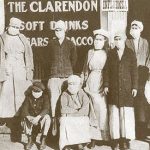
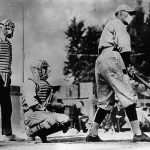 September, it was a far worse strain that it had been before. Twelve thousand soldiers came down with the flu in Massachusetts in mid-September. Philadelphia was the hardest hit city in the United States with a loss of nearly 12,000. The whole city was quarantined. In the United States, five out of every thousand people fell victim to the flu. Other countries were far worse, some as much as ten, fifteen or even thirty five per thousand, with 20 million people dying in India alone. In the end, more people died from the influenza pandemic, than from all of the battles of World War I combined.
September, it was a far worse strain that it had been before. Twelve thousand soldiers came down with the flu in Massachusetts in mid-September. Philadelphia was the hardest hit city in the United States with a loss of nearly 12,000. The whole city was quarantined. In the United States, five out of every thousand people fell victim to the flu. Other countries were far worse, some as much as ten, fifteen or even thirty five per thousand, with 20 million people dying in India alone. In the end, more people died from the influenza pandemic, than from all of the battles of World War I combined.

